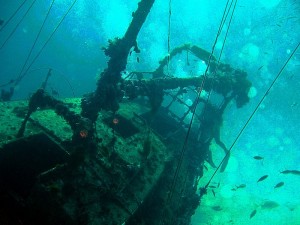A victory in the war of wrecks
- On 05/02/2009
- In Underwater Archeology
- 0 comments

From Archaeology
I am feeling immensely cheered. It’s not just that I had a fine holiday season with family and friends, and that I’m now completely revved up for another year of exploring the labyrinthine world of archaeology.
Something grand has happened today: after eight years of immensely hard work on the part of underwater archaeologists and diplomats around the world, the UNESCO Convention on the Protection of the Underwater Cultural Heritage enters into force.
Nautical archaeologists have long sought to put an end to looting and extend some form of legal protection to archaeological sites on the bottom of the sea.
It has been and continues to be a herculean fight, one that they’ve waged against increasingly sophisticated treasure hunters and—more depressingly still—against governments around the world that have made Faustian pacts with treasure hunters, allowing them to plunder historic wrecks in exchange for a cut of the profits.
Perhaps you think that only impoverished third-world countries would agree to such deals, but you would be very mistaken. The United Kingdom, for example, a nation whose illustrious history rests on the strength of its Royal Navy, betrayed its past in exactly that way in September 2002.
To its great shame, it secretly issued a contract to the American treasure-hunting firm, Odyssey Marine Exploration, to salvage one of its historic, treasure-bearing warships, HMS Sussex, from waters off the Gibraltar coast.
Add a comment